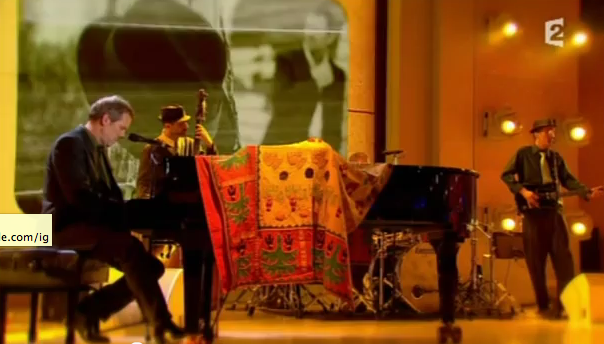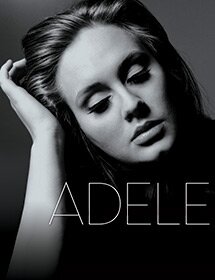For larger versions of the photos, visit Bruce Fleming’s Flickr page.
From the moment he strolled out onstage–no cane, unlike his House, M.D., character–Hugh Laurie had the Benaroya Hall audience firmly on his side, so it wasn’t really necessary, in a burst of Englishness, for him to soft-shoe over having the temerity to come before us to play music out of New Orleans’s history. (In another burst of Englishness, Laurie made this the first New Orleans blues concert I’d attended with a toast to the Queen in advance of her Diamond Jubilee.)
Laurie plays piano and guitar, but, he instructed the audience, the real musical thrills were going to come from the other musicians onstage: the Copper Bottom Band. They were the gleaming Rolls Royce and its throaty purr, he said, he was merely the hood ornament–throwing his arms back in the classic Spirit of Ecstasy pose.
If you missed the evening, Laurie’s New Orleans songbook can be found on CD; Let Them Talk contains many of the songs performed. I have to confess to rating his piano playing higher than his guitar, and both higher than his singing. It’s not that he has a terrible voice, but it isn’t suited to every one of these songs he clearly loves, and which often have been sung by the best.
Still, his high baritone is better than serviceable on “St. James Infirmary,” the title track, even “Battle of Jericho,” though he is of course no Mahalia Jackson. But neither is that the point–what is the point is the genial way Laurie introduces the songs, crediting the creator, mentioning a stand-out interpretation, and generally letting you in on the appeal of these particular songs for him. If their first post-show purchase was Laurie’s own CD, I have to imagine that plenty of people will have been inspired to look up some Jelly Roll Morton, some Lead Belly as well.
And he’s absolutely right about the Copper Bottom Band’s chops (Jay Bellerose, drums; David Piltch, bass; Patrick Warren, keyboards and accordion; Vincent Henry, “all the blow-y things”; and Kevin Breit, guitars and mandola). Vincent Henry can make a bass saxophone groan like two cypress trees rubbing in the wind, and his alto sax is warm-toned, a good muddy rather than reedily bright. His clarinet doesn’t really come in tossed-off licks, but like an ice skater leaning forward slightly, pressing on.
From the second song of the set, I was dialed in to Jay Bellerose’s terrifically nuanced work on drums–for the main reason that you often don’t get nuance on drums at all. Bellerose could mallet out an almost vicious menace on the snare, backed up with a jolting kick drum, or switch it up with a light rapping of the reversed stick on the drumhead. For each song, Bellerose took up an attitude that the rest of the band could play off. Here’s his extensive discography.
The crowd kept Laurie and the band for an encore, though Laurie protested that since they didn’t know any more songs, they’d have to play the whole show again–to rapturous applause. They didn’t, but if you haven’t heard enough, there’s also a deluxe edition of Let Them Talk that should help.
Now here’s Jelly Roll singing “Buddy Bolden’s Blues.”



